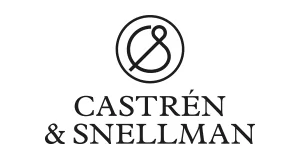- within Finance and Banking topic(s)
- in United States
- within Finance and Banking and Intellectual Property topic(s)
- with readers working within the Oil & Gas, Property and Securities & Investment industries
As the sustainable finance landscape continues to evolve, staying informed about recent changes in green, social, and sustainability-linked loan principles is crucial for all stakeholders aiming to contribute to environmentally and socially responsible economic activities.
This blog post continues our series on sustainable finance and follows our previous blog post on the LMA's model provisions and model term sheet for green loans. We now turn our focus to the updated versions of the Green Loan Principles (GLP), Social Loan Principles (SLP), Sustainability-Linked Loan Principles (SLLP) (together, the Principles), and their associated guidance documents jointly released by the Loan Market Association (LMA), the Loan Syndications and Trading Association (LSTA), and the Asia Pacific Loan Market Association (APLMA) on 26 March 2025.
These updates reflect a coordinated effort to align the sustainable loan market with evolving regulatory expectations, market best practices, and increasing investor demand for credible, high-integrity instruments. The revised Principles reinforce the need for transparency and accountability, while maintaining the flexibility needed for broad application across sectors and jurisdictions.
The following key updates provide a timely roadmap for all market participants looking to align with best practices in structuring credible and impactful sustainable finance.
Key updates for market participants across the principles
- Clarification of terminology and requirements: A new interpretation section has been introduced in each set of Principles to delineate between mandatory requirements, recommendations, options, and possibilities. This enhancement aims to provide greater clarity and consistency in the application of the Principles and helps market participants better understand their obligations versus areas where flexibility is allowed. In this context, "shall" denotes a mandatory requirement, "should" signals a strong recommendation, "may" indicates an optional course of action, and "can" refers to a possibility or capability.
- Removal of grandfathering provisions: The SLLP no longer includes the grandfathering language which allowed existing transactions to adhere to the version of the principles in effect at the time of their origination. This deletion underscores the expectation that all sustainable finance instruments align with the most current standards.
- Refinement of eligible project categories: The GLP and SLP have updated their lists of eligible project categories to reflect current market practices and provide clearer guidance on qualifying projects. These refinements assist borrowers and lenders in accurately identifying projects that meet the Principles' criteria.
- Clarified terminology on greenwashing: Previously, the SLLP identified three main ways in which greenwashing could occur. The updated guidance now broadens this definition, making it clear that greenwashing can arise in several areas. These include the use of KPIs that are not material or central to the borrower's business, setting SPTs that lack ambition or significance, and failing to adequately monitor, report, measure, benchmark, or disclose performance against SPTs. Additionally, the language has shifted from "avoiding greenwashing" to "mitigating greenwashing risk," reflecting the complexities associated with greenwashing. The updated principles also emphasize that external communications must be clear, fair, and not misleading, replacing the previous requirement for them to be simply accurate.
- Alignment with broader market practices: The updated guidance documents incorporate Frequently Asked Questions (FAQs) to elaborate on market practices and align concepts and terminology with the wider sustainable finance market. This inclusion aims to provide market participants with a more comprehensive understanding of the principles' application.
The content of this article is intended to provide a general guide to the subject matter. Specialist advice should be sought about your specific circumstances.



